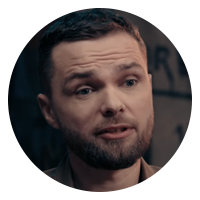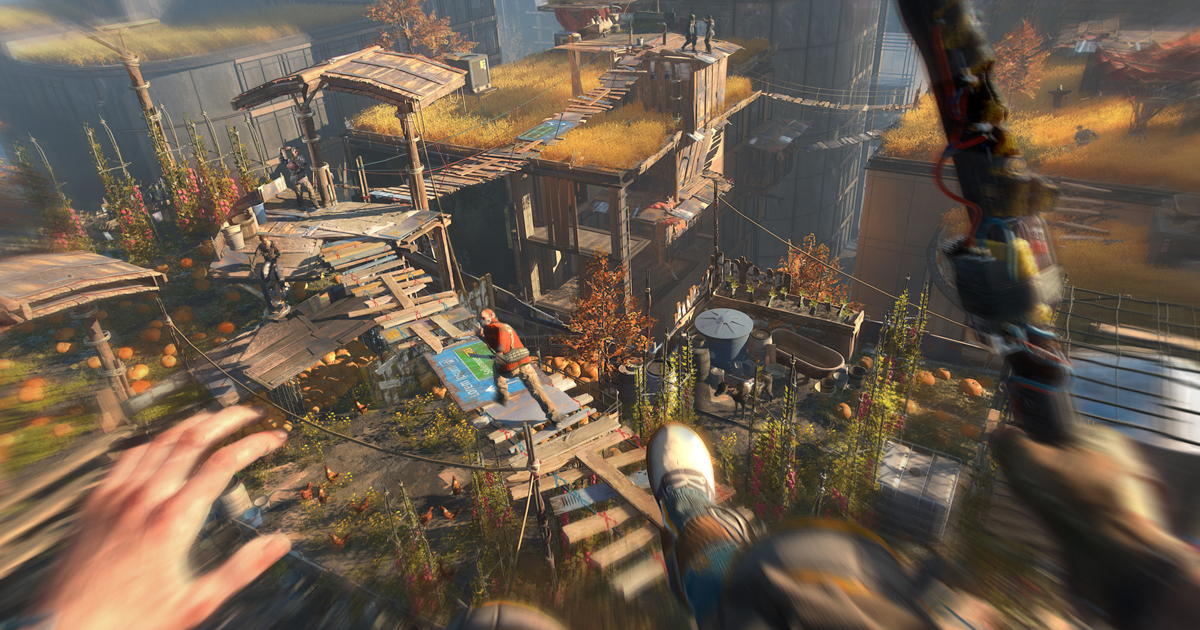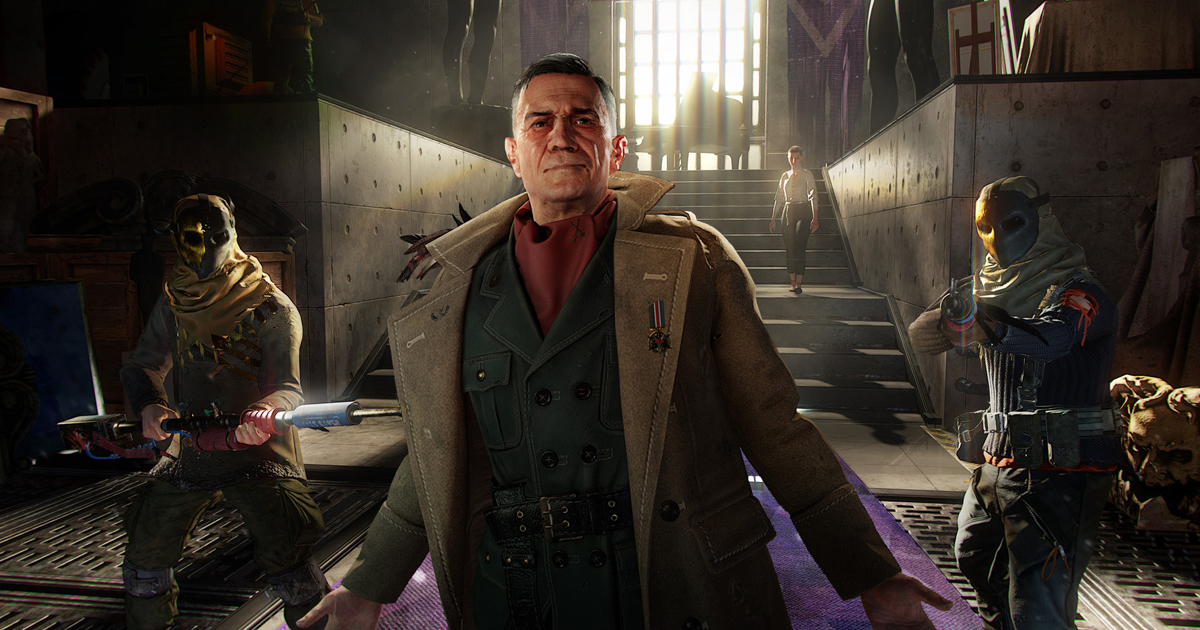Interview with the producer of Dying Light 2: "This is not a typical sequel — we wanted to make the game better in all aspects"
Dying Light 2 Stay Human shows excellent sales at the start. However, Techland encountered a lot of problems during production. We talked with a senior studio producer about the difficulties of developing a sequel, the expansion of the company, the work of the narrative team and the impact of the pandemic on internal processes.
Evgeny Obedkov, author App2Top.ru : Hi, tell me a little about yourself, what are you responsible for in Techland now?
Cornel Yaskula
Cornel Yaskula, Senior producer of Techland: Hi, I’m one of the senior producers of Dying Light 2 Stay Human. I started working at Techland over 15 years ago, and this was my first real job. As a producer, I organize the work of a gameplay team: programmers, animators, designers and testers.
What is the mood in the studio right now? Has the team already exhaled after the release of the game?
Cornel: We have been waiting for this moment for a long time and are very glad that the game has finally come out. Of course, we plan to take a break, recover, but first we need to make sure that the game works without problems and fix the shortcomings that we are finding now.
The estimates have already become known. The game as a whole was warmly received, but part of the audience has questions. What elements do you think worked best for yourself? Maybe some things didn’t work out to be fully implemented?
Cornel: It’s very difficult to choose one thing. I personally really like how the music adjusts to parkour while moving around the city. I also like the player progression system and the fact that even after a few hours, the game still offers completely new mechanics that change the gameplay. Of course, there are some problems in it, which were pointed out in the reviews. Right now we are working hard to fix the most important ones as soon as possible.
Let’s talk a little bit about the history of development. The game was postponed more than once. What caused the postponements?
Cornel: To be honest, there were many reasons. Firstly, we were not satisfied with the state of the game at certain stages of production. We tried to make specific game mechanics work, and then a pandemic started, which also negatively affected the development. But the most important thing is that we didn’t want to release a game that doesn’t suit us and that won’t meet the expectations of our players.
Seven years have passed since the release of the first Dying Light. Is there an opportunity to look back and break the entire development of the sequel into stages, and at the same time tell about them? Which one of them did you encounter the greatest number of calls?
Cornel: We always start thinking through the design on paper, after which we proceed to rough prototyping. When something starts to loom, we look at the game more broadly: from the perspective of the ultimate experience for the players.
For me personally, the most difficult stage of development is the completion of pre—production. At this stage, it is necessary to approve the entire game design. We need to agree that we are now facing exactly the game that we want to develop.
How much has the staff expanded during the entire development of Dying Light 2 (and especially compared to the first part)? Has the growth of the company created additional problems in terms of management and development management?
Cornel: At the moment, Techland employs 410 people. At the beginning of the development of Dying Light 2, we had about 200 employees. It turns out that our team has doubled since then.
With the growth of the company and the hiring of new employees, it became obvious that we also need to strengthen the management structure. So each department (in addition to the main specialists) now has its own lead, producer and director.
How did the team adapt to the new realities during the pandemic?
Cornel: It was a really difficult period. We were forced to completely switch to remote work and adapt almost everything — from technical infrastructure to everyday tasks for developers. But I think we did a good job because the transition didn’t take very long. And the goals set helped us focus on the positive aspects during the pandemic.
One of the challenges for the studio was also the transition to the new C-Engine. You have repeatedly noted the flexibility of the toolkit, which made it possible to develop for several generations of consoles at once. But what problems did this lead to?
Cornel: C-Engine is a new version of our previous Chrome Engine. One of the biggest problems for the team was our semi-procedural content generation system. Because of this, it was quite difficult to meet the requirements for quality, gameplay mechanics and performance on consoles of the previous generation. We had to create a lot of tools and processes that allow us to analyze and adjust the content of such a huge game world.
In Dying Light 2, the city is not just a flat map. You can jump out of a building on a paraglider, fly through several streets, fly into a room and kick the enemy from the air, and then jump out on the other side on the street full of monsters on the run.
Dying Light 2 is released on consoles of both the old and current generation, although in the first trailer the game was announced only for PC, Xbox One and PS4. Wasn’t it scary to release and optimize so many versions?
Cornel: Considering the performance of the old generation consoles, we had to approach the design and optimization wisely. We started testing the game on older consoles at the earliest stage of the Dying Light 2 development. This was due not only to our ambitions, but also to a lot of technological changes. Our main goal was to make Dying Light 2 work the same on all platforms.
We use hardware differences between devices, adding additional details or settings if necessary. For example, we use ray tracing on new consoles and powerful PCs, or VRR mode, which provides a very high frame rate.
Apart from multiplatformity, what features did C-Engine give you compared to the old technology?
Cornel: We have been constantly improving the engine for our games for about 25 years. Dying Light 2 has been in development for more than six years. I think it’s best to just run the first and second parts to feel the difference yourself. This is not a typical sequel — we wanted to make the game better in all aspects. We will continue to develop Dying Light 2, as it was with the first part. I hope that in the future we will surprise players with improvements and innovations that we plan to bring to the game.
How difficult was it to transfer the basic gameplay and other systems from the first part to the new game? Did you have to create them again?
Cornel: It wasn’t a problem for us. Imagine that you understand the principles of creating a human sculpture — in this case, there is no big difference whether you take wood or plaster as a basis.
Let’s talk about the plot at the end. What did you give priority to — the story or the gameplay?
Cornel: As for the plot, we tried to make it more adult. It had to comply with the main pillars of Dying Light 2 — “choice and consequences”. Each team has focused on the areas they specialize in to create the best experience for the players. We wanted Dying Light 2 to combine all aspects of the game in the best possible way.
Tell me about the team that worked on the script. Have people with different backgrounds and industry experience influenced your approach to the story and quests?
We have a strong narrative team, which consists of a dozen specialists. Among them are narrative designers and quest designers who worked together on the plot. We were constantly making changes — sometimes they were minor, and sometimes they were large-scale. It’s hard to say how many iterations the plot went through in the end, and we didn’t count it.
Some of these talented professionals have worked on other AAA games or HBO series, while others have written their own books and stories. The joint efforts of all these people obviously had a positive impact on the plot and quests.
And the last question. What, in your opinion, can turn an IP into a successful franchise?
Cornell: The players come first. We do everything to make them happy and satisfied. You need to listen to your community and meet their needs while remaining transparent in your decisions.
Good advice! Thank you for the interview and good luck in further supporting Dying Light 2 and working on future games!




